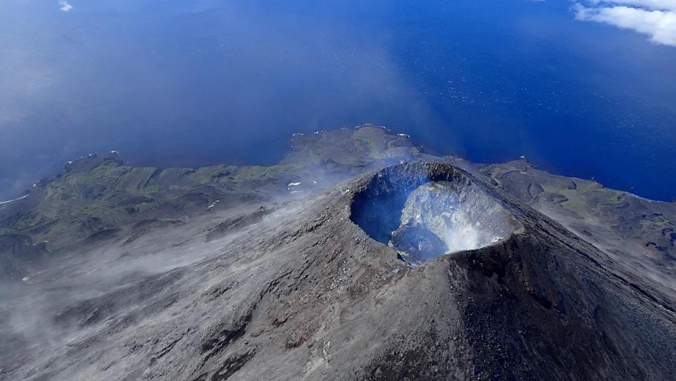
A new approach to analyzing earthquake data revealed an unprecedented level of detail in the deep plumbing system underlying Alaska’s Cleveland volcano, one of the most active of more than 70 Aleutian volcanoes, according to a study in Scientific Reports by Helen Janiszewski, assistant professor of earth sciences at the University of Hawaiʻi at Mānoa. Janiszewski was at the Carnegie Institution for Science at the time of the research, with Lara Wagner and Diana Roman.
In this study, Janiszewski demonstrated a technique that uses seismic waves coming from distant earthquakes, but isolates the part of them that is affected by moving through the boundary between the Earth’s mantle and crust. This allowed the research team to build models that better distinguish the partially molten regions from the surrounding solid rock in these difficult-to-reach depths beneath Cleveland volcano, without requiring an extensive number of seismic stations at the surface.
“We revealed the volcano’s deep subterranean structure in never-before-seen detail, using fewer instruments by an order of magnitude than is typical for detailed seismic imaging at volcanoes,” Janiszewski said.
Arc volcanoes like Cleveland form over plate boundaries where one tectonic plate slides beneath another. They are linked to the Earth’s mantle by complex subsurface structures that cross the full thickness of the planet’s crust. These structures are more complex than large chambers of molten rock. Rather, they comprise an interlaced array of solid rock and a “mushy” mix of partially molten rock and solid crystals.
Resolving this subterranean architecture is crucial for emergency planning and saving human lives. But these regions have been difficult to capture.
Since it’s impossible for humans to directly observe the depths of Earth’s interior, scientists need instruments to help them visualize what’s happening. Traditionally, a variety of geophysical and geochemical approaches are deployed to determine the structures that exist beneath a volcano.
Although Cleveland has frequent gas emissions, explosions and ash deposits at its surface, there is very little evidence of seismic activity deep beneath the volcano. This makes imaging the architecture of the lower and middle crust below Cleveland very challenging.
“The technique will allow imaging of structures underneath volcanoes where there are only a few stations, or where a lack of deep earthquakes in the vicinity makes other methods difficult,” Janiszewski added.
For more on the story, see SOEST’s website.
—By Marcie Grabowski

